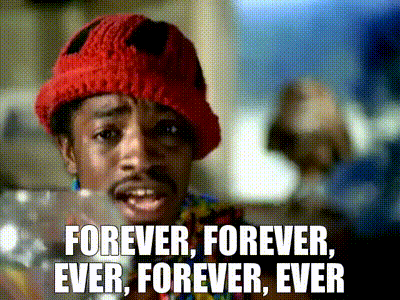You Don’t Need a Content Strategy
You need an Evergreen Essay™️
Right now there’s a certain conventional wisdom going around that the best way to build a business is to first build a brand, most often by regularly posting content, aka “saying stuff on the internet.”
As a communications and content consultant, I don’t doubt this is an effective strategy. Storytelling is essential to any business, and personal brands are especially crucial for startups, where the founding team is often more central to attracting talent and investor dollars than the product.
I also think that, when applied as a general rule, the demand to always be posting can lead time-constrained startups and VCs astray. Nothing is more valuable to a fast-growing startup or VC than a leader’s time, and for those who don’t find themselves naturally drawn to building in public, over-focusing on creating content can be a costly distraction.
The Evergreen Essay™️
Rather than regularly posting lots of content, focus your energy on developing one evergreen piece of content.
Your Evergreen Essay need not be an actual essay/blog/newsletter. It can also be a video or a TED talk or even a tweet. It can be the “About” page on your website.
Your Evergreen Essay should be easy to discover, share, and understand. Anyone who reads it should grok, “This is what these folks believe/are up to.” It is a mission statement, a call to action, a crystallization of whatever earned secret or Really Big Idea you have about the world.
And like that most famous of evergreens, the Christmas tree, you may need to update your Evergreen Essay every year or two. That’s okay; your point of view should evolve as your business does. The point is that the Evergreen Essay is the thing you feature on LinkedIn or Substack for as long as it’s relevant. Ideally the longevity is greater than a few months (in contrast to daily or weekly content pegged to a specific point in time)—but the essay won’t last forever ever.
VCs are great at this. Cowboy Ventures capitalized on their infamy for creating the term “unicorn” with their recent “Welcome Back to the Unicorn Club, 10 Years Later.” The Council Fund’s Amber Illig recently wrote about “Software’s Third Act.” (In the interest of transparency, I’m a member of both firms’ angel groups.) And perhaps most famously, Marc Andreessen of a16z wrote over a decade ago about “Why Software Is Eating the World.”
Dissemination
Once you’ve developed your Evergreen Essay, you can disseminate the hell out of it. Put it on LinkedIn; post a tweet-thread; email it to your investors; put it in your recruitment outreach. You should feel like you’ve metaphorically gone hoarse from shouting about your Evergreen Essay to anyone who will listen.
But don’t build your content with the dissemination in mind. Focus on the WHAT, not the HOW.
Another way of saying this is: When creating your Evergreen Essay, don’t optimize for the almighty algorithm. Every platform is constantly tweaking their algorithm, but at the end of the day, companies are trying to show people what they want to see. In other words, algorithms are constantly being tweaked to get asymptotically closer to showing you quality content.
So aim at quality, not the algorithm. Good content generally rises to the top.
And anyway, your ultimate goal isn’t “create content that performs well on LinkedIn/[platform of choice]”; it’s “build trust with pre-seed founders so they approach me about investment opportunities” or “build awareness with potential customers.” Dissemination helps get your idea in front of these audiences, but your idea itself—your Evergreen Essay—is what will actually win them over.
A Caveat
A certain kind of person loves to put themselves out there. They are constantly sharing thoughts on X, Threads, and LinkedIn. Maybe they have a podcast or a Substack. If that’s you, rock on 🤘. Lean into that. Use those fora to build a likeminded community and see which ideas are stickiest.
This kind of founder may or may not have an Evergreen Essay for their business. Perhaps they are moving too fast and their ideas about the world changing too quickly for something meant to be relevant for a year-plus. Or perhaps an Evergreen Essay is a complement to their day-to-day posts.
But more importantly for the purposes of this newsletter, if that’s not you—if you’re not the kind of person who gets a lot of energy from posting takes on the internet—don’t force it. Spend your time building your business, and let the Evergreen Essay take care of your content strategy.


